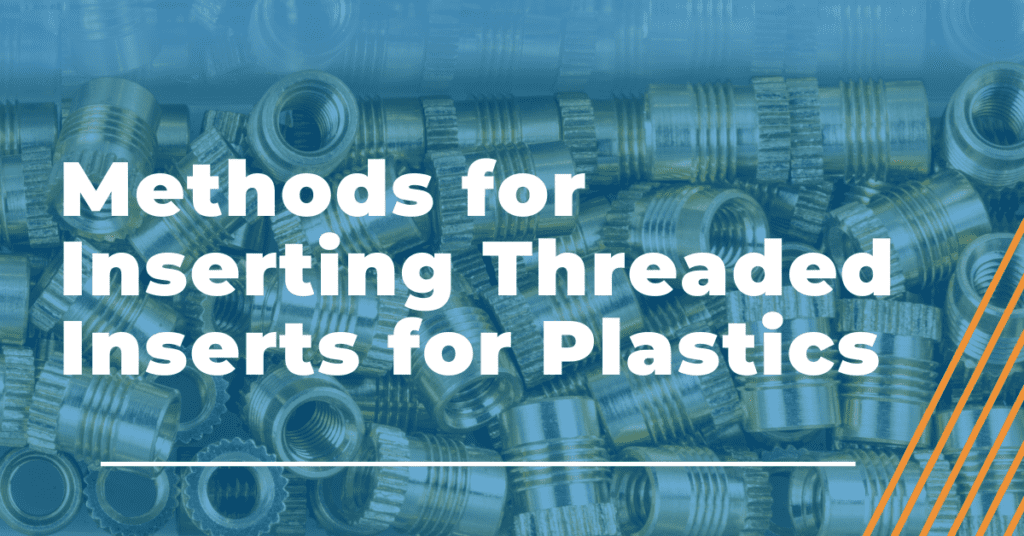
Methods for Inserting Threaded Inserts Into Plastics
Threaded inserts are often referred to as nuts designed to create threaded holes for fast and secure fastening. Essentially they are placeholders so that fasteners can be screwed in and removed. How manufacturers incorporate these inserts into their designs can ultimately determine the structure stability, overall look and functionality of their products. In this blog, we look at some of the most common methods for inserting threaded inserts into plastic applications. We cover their respective process applications and some pros and cons of each.
Ultrasonic Welding
During the ultrasonic installation process, the ultrasonic horn converts electrical energy into high-frequency vibrations that are delivered through a pneumatic cylinder to apply a precise downward force. These vibrations generate enough heat to melt the plastic around the insert and press the metal into the plastic.
Here are some advantages of ultrasonic insertion: It’s extremely fast. There is less tooling configuration between different size inserts and the equipment can be used for other plastic joining applications. Some of the negatives around ultrasonic insertion are that it’s extremely loud, due to metal-on-metal vibration and the vibrations can create metal particulates that cause part contamination concerns.
Induction Heat
Now for induction insertion, a nut is placed into the induction coil that uses its electromagnetic field to heat the nut. Then the nut is removed from the coil and pressed into the plastic part, and cooled. The processing can be done with an air cylinder, a servo motion or a multi-axis robot.
Here are some of the advantages of heat induction: The installation process is quieter than ultrasonic welding. Multiple inserts on multiple planes can be catered to with platen-style induction heat machines or six-axis robots. Vibratory bowls can be used to feed the inserts, eliminating the need for operators to handle small parts. The ability to adhere to tight press-in tolerances is available with induction heat. Cons of the induction heat process are that it requires a slightly longer processing time for installation due to heating and cooling, and a fully automated system requires more upfront capital cost than a simple ultrasonic welder.
Molded-In Threaded Inserts
For molded-In threaded Inserts for plastics, pins are machined or inserted into the mold core. The insert is placed over the pins for each cycle of the molding process. With this process, the resin completely covers the inserts. This usually results in the best bond and eliminates the need for any additional insertion process. However, this process requires a more complicated core with close tolerances between the pins and inserts. Another con might be that the cycle times could increase because it takes time to place the inserts in between each cycle.
Cold Pressed-In Threaded Inserts
Cold pressed-in threaded inserts for plastics are a great alternative to others for economic reasons because they require no special equipment. Higher performing pressed-in inserts feature solid bodies and require a press for insertion. When a mating screw is installed, the sides of these inserts are forced outward, which creates a biting contract with the ID wall of the hole. They essentially work like the shared lag bolts you’d find at the hardware store.
Not Sure What Best for your Project?
At AMS, our team has experience with all methods and can help you decide which might be best for you. If you would like to learn more, subscribe to our channel or take some time to browse our website. Here you’ll also discover how, unlike other machine builders, we have our proven 17-step process and a team of dedicated professionals willing to go above and beyond your expectations.
